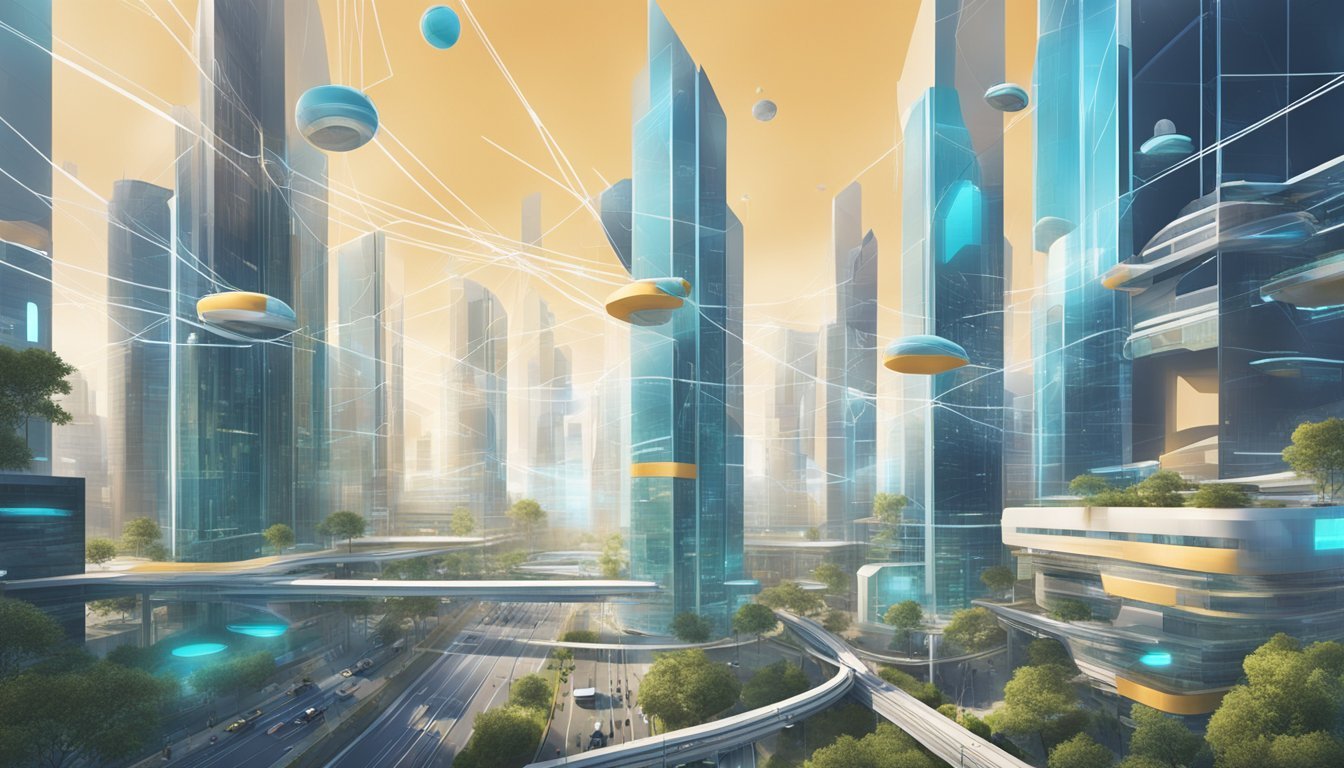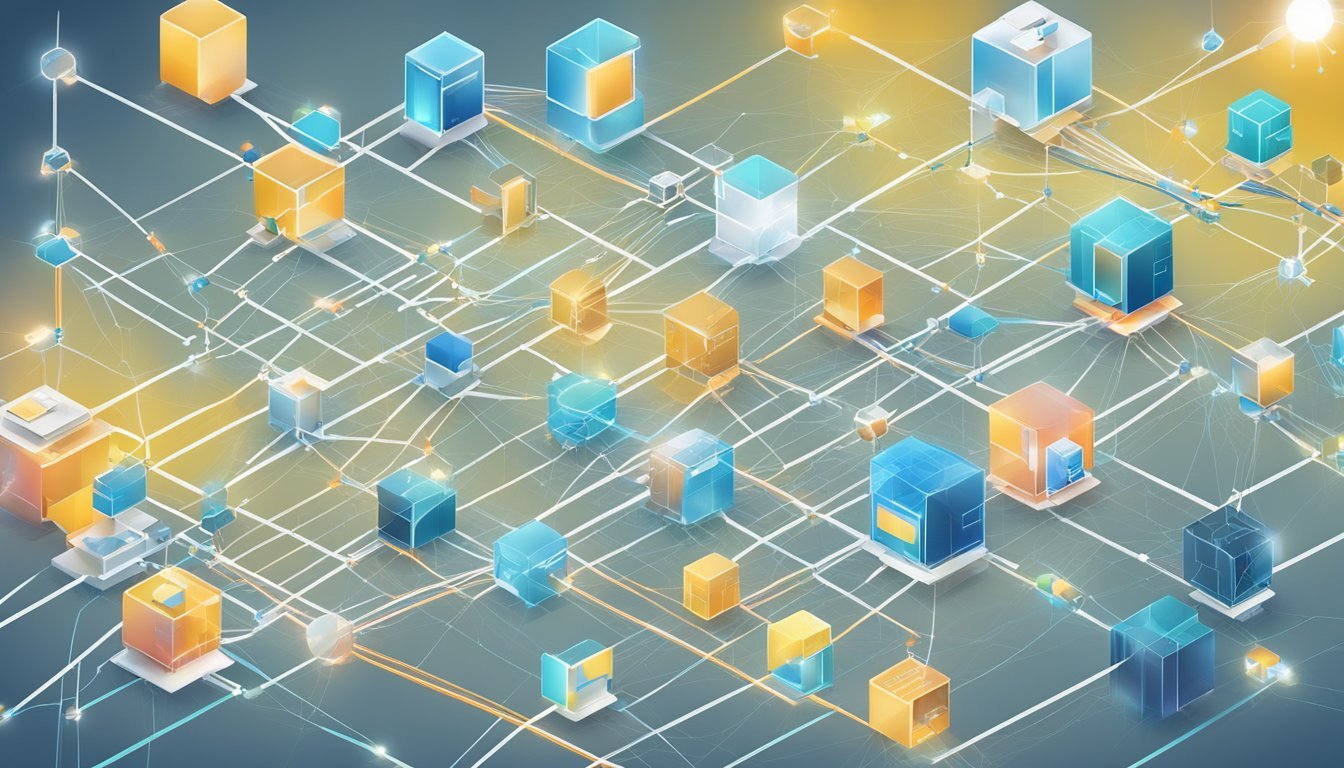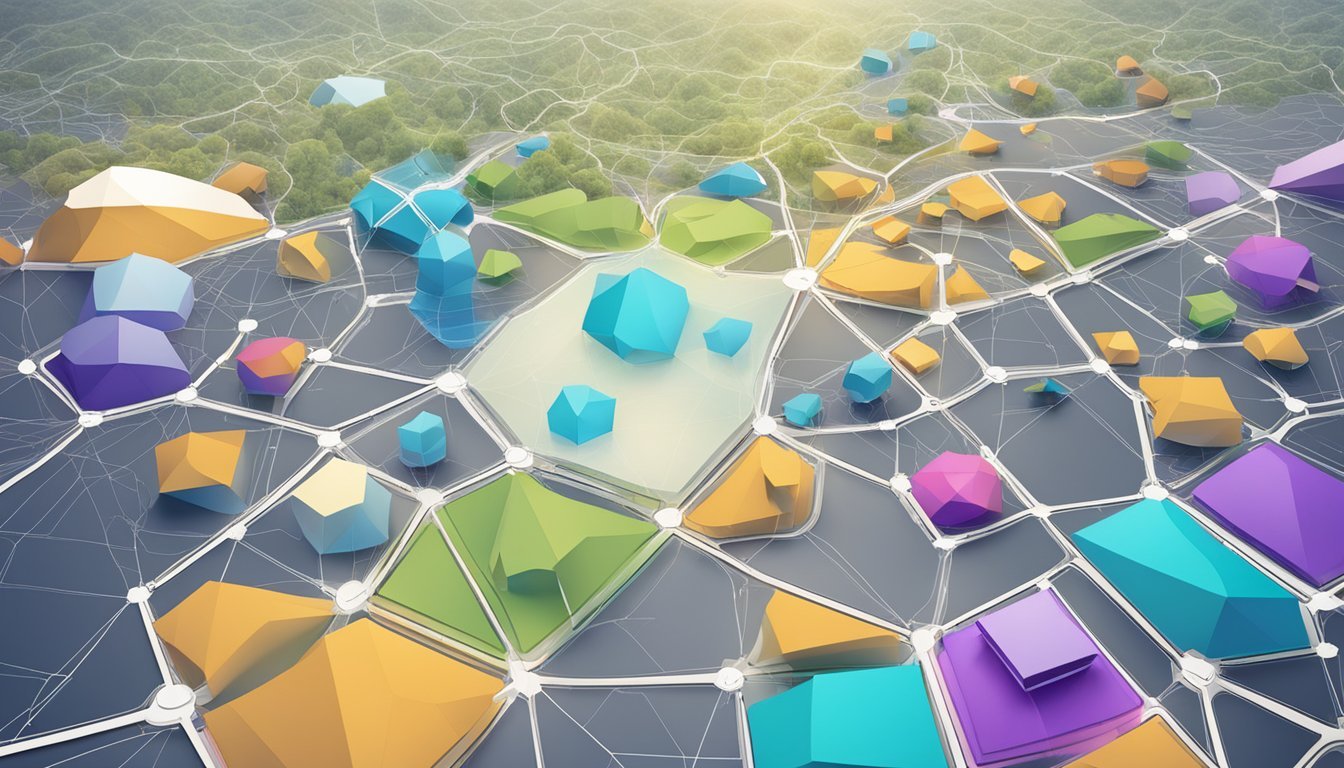Spatial Computing: Bridging Digital and Physical Worlds for Future Innovation
Spatial computing represents a convergence of various technologies that collectively have the potential to transform our interaction with the physical world. It integrates the spatial dimension into computing, allowing both hardware and software to recognize and interpret physical space within the context of digital data. The foundations of spatial computing lie in enabling devices to locate themselves within an environment and interact with it realistically, be that through augmented reality, virtual reality, or other location-based technologies. This has the transformative potential to advance sectors as diverse as gaming, engineering, and urban planning, making the opportunities that spatial computing presents both vast and multidimensional.
Yet, with these opportunities come significant challenges. Addressing the intricate technical complexities of accurately modeling and processing spatial data is a fundamental hurdle. The precision required for devices to function seamlessly in a spatially computing ecosystem demands continuous innovation and meticulous calibration, highlighting the interplay between the software's sophistication and the hardware's capabilities. Moreover, the practical application of spatial computing also raises important questions about privacy and data security, as the technology often relies on the collection and analysis of detailed locational data.
Despite these challenges, the journey forward for spatial computing appears rewarding. The technology's ability to merge digital and physical spaces is seen not merely as an incremental enhancement but as a paradigm shift in human-computer interaction. The future developments in spatial computing are anticipated to reshape industries by offering more intuitive ways of navigating and controlling technology, further blurring the lines between the digital and the tangible worlds.
Foundations of Spatial Computing
Spatial Computing forms a technological backbone that is steadily transforming how individuals and systems interact with the physical and digital environments. This section provides an insight into the essential aspects and the developmental journey of spatial computing, alongside the technological pillars that support it.
Core Concepts and Definitions
Spatial computing refers to the combination of physical and virtual realities, where the location of objects in space is foundational to the interactions and operations. It encompasses technology that enables the computing environment to recognize and process the location and movement of objects within a given space. Spatial computing research often focuses on how these technologies can improve various industries and human-computer interaction.
Key technologies integral to spatial computing include Geographic Information Systems (GIS), which manage and analyze spatial data, and cloud computing platforms that support the vast data processing needs. Additionally, spatial computing interfaces with both augmented reality (AR) and virtual reality (VR), where the former overlays digital information onto the real world and the latter creates a completely immersive experience.
Historical Evolution
The journey of spatial computing began with innovations in virtual reality and augmented reality, emerging from early efforts to integrate the physical and digital worlds. Over time, advances in hardware and software have allowed spatial computing to leverage increasingly sophisticated technology platforms. The historical evolution of spatial computing is marked by milestones that include the creation of graphical user interfaces, advances in sensor technology, and the explosion of mobile device capability which have all played pivotal roles in shaping the current landscape.
Key Technologies
Spatial computing is characterized by several key technologies that underpin its functionality:
Virtual Reality: Creates entirely digital environments.
Augmented Reality: Enhances physical environments with digital overlays.
Cloud Computing: Provides the necessary computational power and storage.
GIS: Offers tools to capture, store, manipulate, and analyze geographic and spatial data.
These technologies converge to create systems that are not only aware of spatial information but can also manipulate digital and physical objects within that space. The integration of these key technologies enables various applications across multiple sectors, transforming how they operate and interact with the digital and physical world.
Challenges in Spatial Computing
Spatial computing faces a range of challenges that span from technical limitations to the handling of ethical and privacy issues. These challenges not only affect the technology's development and adoption but also raise significant concerns related to data and interoperability.
Technical Challenges
The technical obstacles in spatial computing involve hardware demands and data processing complexities. High-performing hardware is essential to support the intensive computational requirements. Furthermore, dealing with big data sets obtained from the physical world presents formidable data processing challenges, as systems must be able to capture, analyze, and display spatial information in real-time.
Ethical and Privacy Concerns
Issues surrounding privacy emerge as users' locational data are collected and analyzed. Ensuring that spatial computing applications don't infringe upon individual privacy requires careful consideration. Ethical dilemmas extend to how these technologies may be used and the potential for misuse, raising questions that researchers aim to address through continued ethics research.
Interoperability and Standards
Spatial computing technologies suffer from a lack of interoperability and standards, which hampers widespread adoption. Achieving compatibility across different systems and devices ensures that a variety of tools and applications can work together seamlessly. A unified approach to standards development is critical, driven by ongoing research challenges and open research questions.
Spatial Computing in Industry and Academia
Spatial computing is shaping various industries and educational disciplines with its unique blend of physical and virtual interactions. In both the industrial and academic realms, it is driving innovation through practical applications, affecting economic growth, and influencing research.
Current Use Cases and Applications
Spatial computing is being leveraged across several sectors. In healthcare, it assists in complex surgeries by providing surgeons with enhanced 3D visualizations. In the realm of manufacturing, it is utilized for optimizing layouts and simulations, thus mitigating risks and improving safety. Smart cities benefit through improved urban planning and management, and autonomous vehicles rely on spatial data for navigation and safety. These applications demonstrate spatial computing’s pivotal role in enhancing the capabilities of various systems and services.
Economic Impact and ROI
Investment in spatial computing technology is driving considerable economic impact, with sectors experiencing a substantial return on investment (ROI). For instance, in manufacturing, the adoption of spatial computing tools accelerates product design and reduces time to market, contributing to financial gains. Similarly, smart cities deploying spatial computing solutions are seeing a reduction in operational costs and an increase in efficiency, leading to economic benefits at the municipal level.
Research and Educational Trends
In academia, spatial computing is a burgeoning field of research, with institutions exploring its potential through diverse applications. The intersection of spatial computing with disciplines such as geography and computer science is producing new insights and technological breakthroughs. In education, students are exposed to spatial computing through interactive learning environments, benefiting from hands-on experience that can be applied in industry after graduation. Collaborative efforts between academia and industry are vital in driving innovation, especially in areas like healthcare and autonomous vehicles, further cementing spatial computing's role in future technologies.
Integrating Spatial Computing with Other Technologies
The assimilation of spatial computing within diverse technological domains presents both challenges and opportunities. This integration aims to enhance existing systems and foster innovative applications.
AI and Machine Learning
Spatial computing, when integrated with AI and machine learning, can significantly enhance the capabilities of intelligent systems. Machine learning algorithms can utilize spatial data inputs to make more informed decisions and predictions. For instance, AI-powered drones employ sensor networks and remote sensing data, improving navigational accuracy and supporting advanced environmental monitoring.
Data Analysis and Mining
Data analysis and data mining techniques are essential for extracting valuable insights from the large volumes of spatial data generated by devices. Spatial computing enables the handling and interrogation of complex datasets. Integration in this context means transforming raw data into actionable knowledge, supporting everything from urban planning to disaster response strategies.
Computer Vision and Imaging
The melding of spatial computing with computer vision and imaging transforms how systems understand and interact with the physical environment. This synergy aids in developing applications that need real-time processing and interpretation of visual data, like augmented reality systems that superimpose digital information onto the real world.
Social Impact and Environmental Considerations
Spatial computing has already begun reshaping our societal structures and environmental strategies. It integrates the physical and digital worlds, influencing how societies operate and address ecological challenges.
Smart Infrastructure and Transportation
Spatial computing technologies are critical in enhancing transportation systems and developing smart infrastructure. By leveraging real-time data, cities can optimize traffic flow, reducing congestion and associated greenhouse gas emissions. Projects like the integration of Google Maps into transportation planning exemplify this transition towards more efficient systems. Moreover, these improvements in transportation logistics lead to a lesser environmental footprint, advancing sustainability goals.
Climate Change and Sustainability
The fight against climate change gains a formidable ally with spatial computing. It enables the development of carbon-aware strategies such as tracking emissions in supply chains, thus promoting sustainability. Insights from spatial data provide a backbone for carbon-aware spatial computing endeavors, which are instrumental in reducing greenhouse gases and mitigating climate change. Furthermore, spatial computing aids in better site selection for renewable energy infrastructures, contributing to a more sustainable future.
Social Media and Communication
Spatial computing also transforms social media and communication, with location traces offering enriched user experiences. Features like Facebook check-in allow users to share their location, connecting the physical and digital realms of communication. These technologies foster community engagement and enhance the way information is disseminated, as seen in the seamless integration of devices that create a more intuitive digital world user experience. However, they must be managed with care to safeguard privacy and ensure ethical use of spatial data.
Future Directions and Potential
Spatial computing is at a precipice, with nascent technologies foreshadowing profound impacts on society. Transitional leaps in this domain will likely shape the experiential fabric of daily life and dictate a new paradigm for human-computer interaction.
Emerging Trends and Innovations
Innovations in spatial computing present burgeoning areas of development, marked by advances such as augmented reality (AR) wearables which are forecasted to achieve heightened ubiquity. These devices offer an immersive experience that blends the physical and digital worlds, progressively refining the interface through which individuals interact with spatial data. Innovations likethe integration of machine learning algorithms enhance spatial computing by providing dynamic and context-aware responses to real-world environments.
Policy, Regulation, and Ethical Governance
As spatial computing technologies infiltrate various sectors, they necessitate robust policies and regulatory frameworks to ensure data privacy and security. Ethical governance becomes paramount, particularly as facial recognition and other biometric data used in spatial computing raise significant privacy concerns. Policymakers are challenged to be prescient, anticipating technological shifts and crafting legislation which holistically protects users while supporting innovation.
Funding and Collaborative Ventures
Collaborative efforts and funding are critical to fuel the advances within spatial computing. Government grants and venture capital are pivotal, not only in providing the monetary support necessary for cutting-edge research but also in fostering environments where interdisciplinary partnerships thrive. Collaborations between academia and industry are particularly potent, leading to high-impact innovations that drive the field forward. Funding information often indicates the confidence in spatial computing's potential, exemplifying the investment community's belief in its viability.
The evolving landscape of spatial computing presents a nuanced matrix of challenges and opportunities. Each of these entities—innovation, policies, funding, and collaborative efforts—will be instrumental in steering the course of spatial computing towards a future where technology seamlessly integrates into the three-dimensional space.
Conclusion
Spatial computing stands at the intersection of several transformative technologies. It highlights a compelling future outlook, suggesting an increasingly integrated digital-physical landscape. The effective management of spatial computing resources promises to elevate the efficiency of various industries, offering a natural and intuitive navigation through digital and physical spaces.
Advancements in this field may further amplify the potential for innovation, as applications extend from virtual reality (VR) to the broader scope of mixed and augmented realities (AR). Nevertheless, challenges such as privacy concerns, ethical considerations, and the need for robust infrastructure represent hurdles that must be navigated carefully.
This article has shed light on spatial computing from multiple perspectives, underlining not only its current capabilities but also its untapped potential. The content here underscores the importance of continued research and development to overcome the challenges and fully harness the opportunities spatial computing offers.
In the long term, with strategic focus and sustained investment, spatial computing could transform how individuals interact with the world, offering an enhanced user experience across multiple domains. Therefore, it becomes crucial for stakeholders to persist in exploring and investing in this promising technological frontier.





